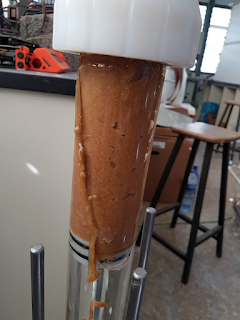Improving dcservo accuracy

Not being an expert in motor control, I created dcservo project to make a basic platform to create cheap servomotors that could replace stepper motors on certain systems, like 3D printers. I chose to implement a full PID controller but that might have been a bit overkill. I was talking today to a more knowledgeable colleague who asked me why I needed a PID. My answer was that without the integral action I was getting a significant position error in the steady state, and the derivative action, though a really small value, was needed to keep the system from overshooting. However, he suggested me to focus only on a simpler, proportional controller with a twist: most of my position error is coming from the fact that there is a dead zone where motor does not respond to control action. It is true, though the motor will move faster the higher the PWM value it is applied to the motor drive, it is also true that low values (between 1 and 50 in my test system) do not cause the motor to move

